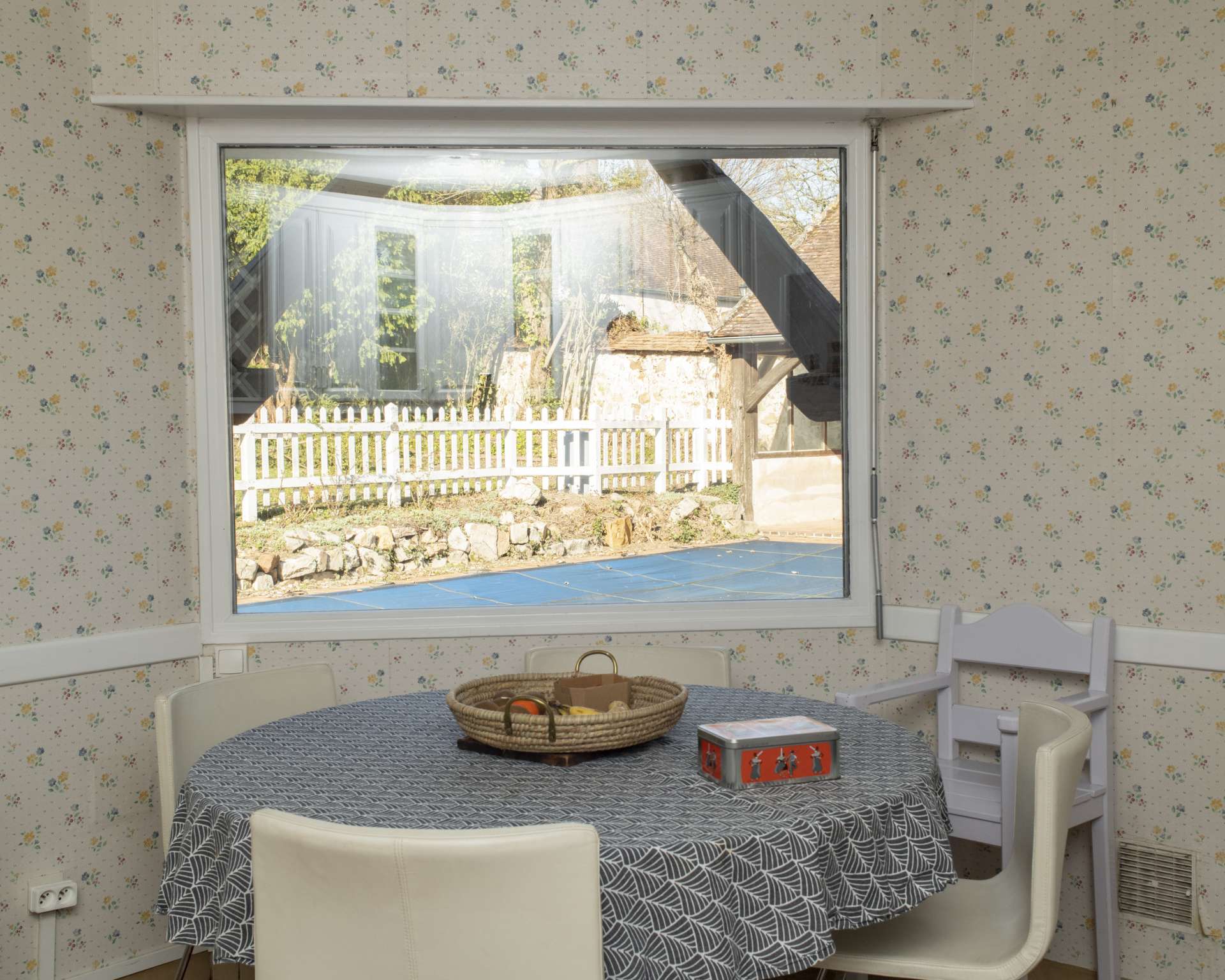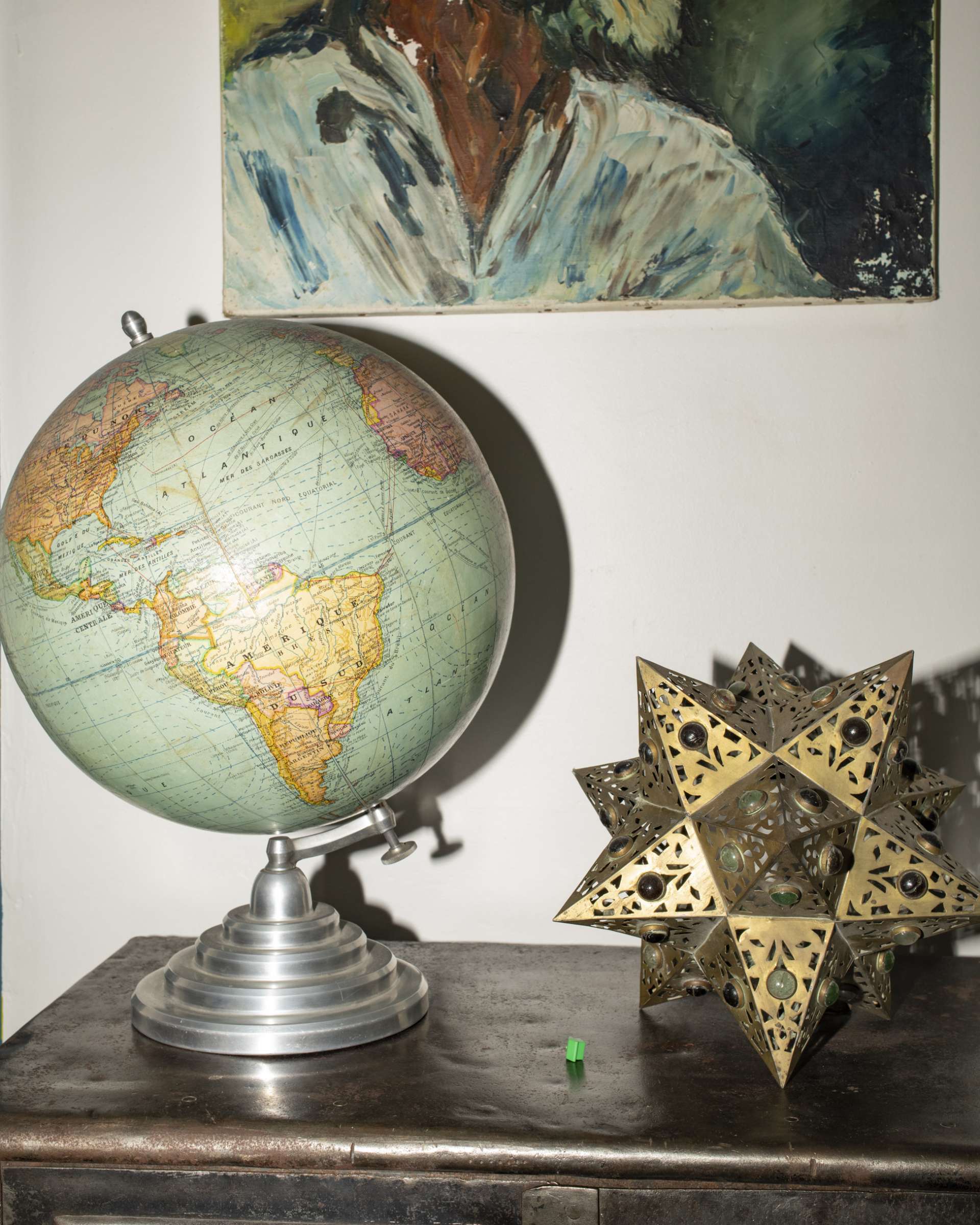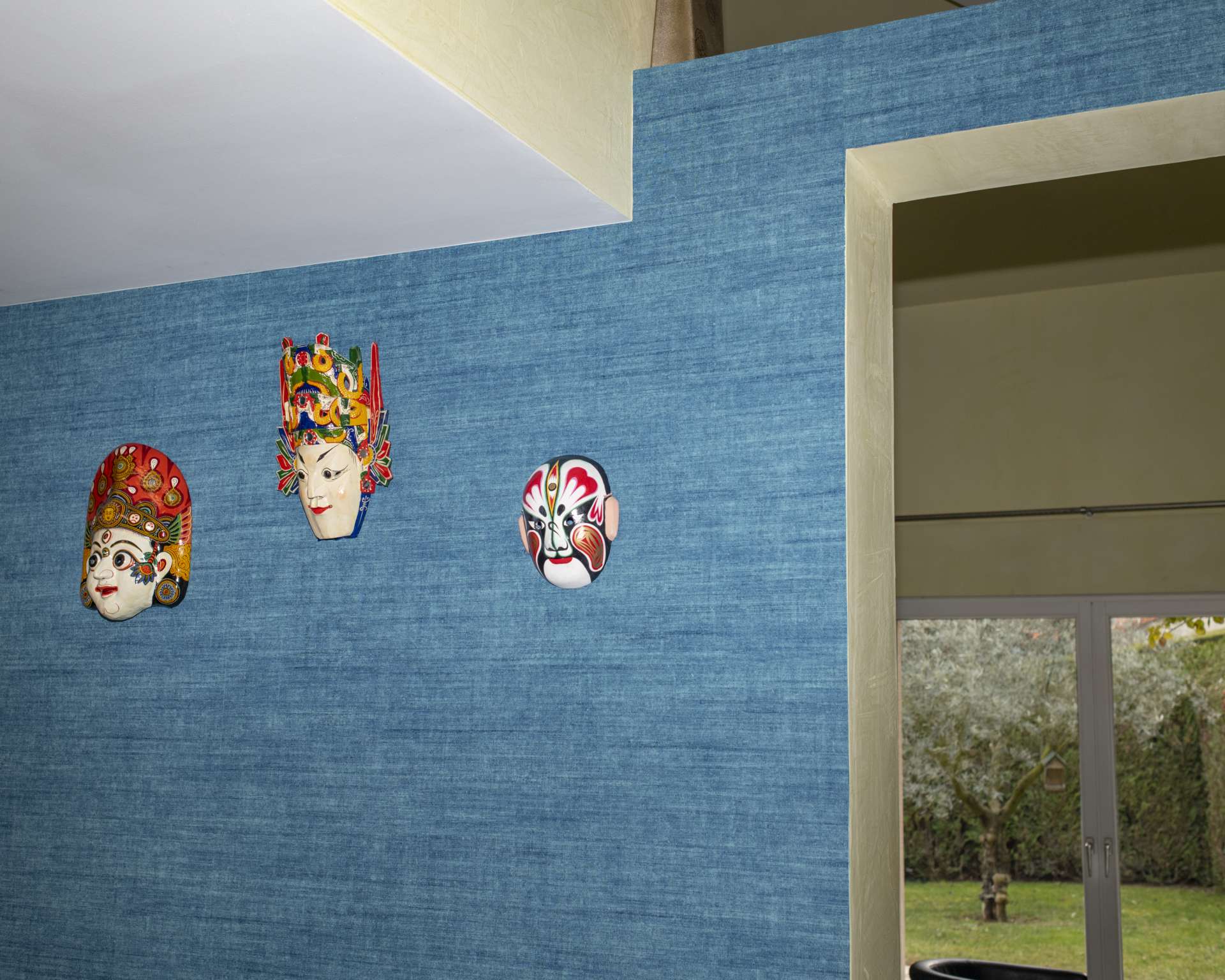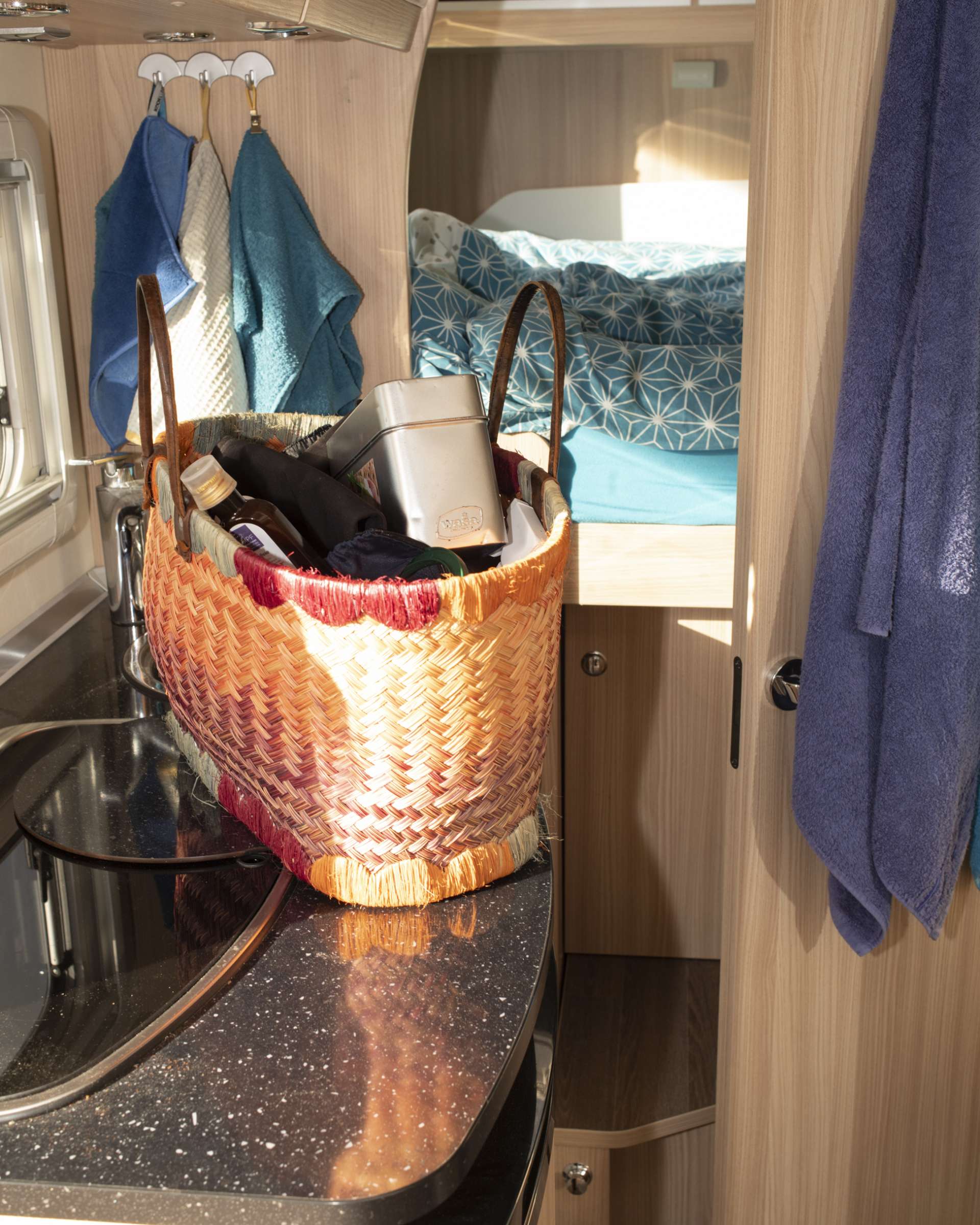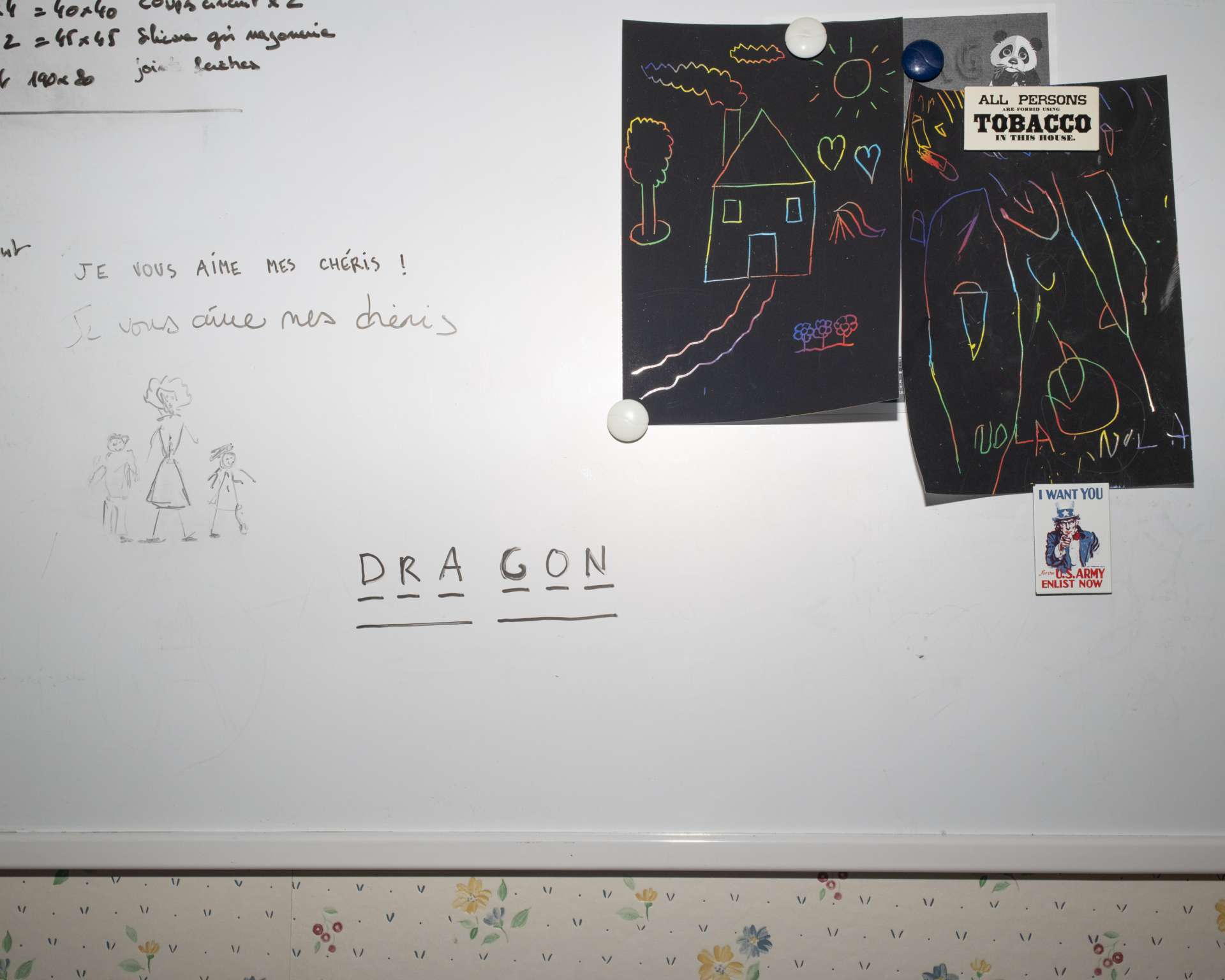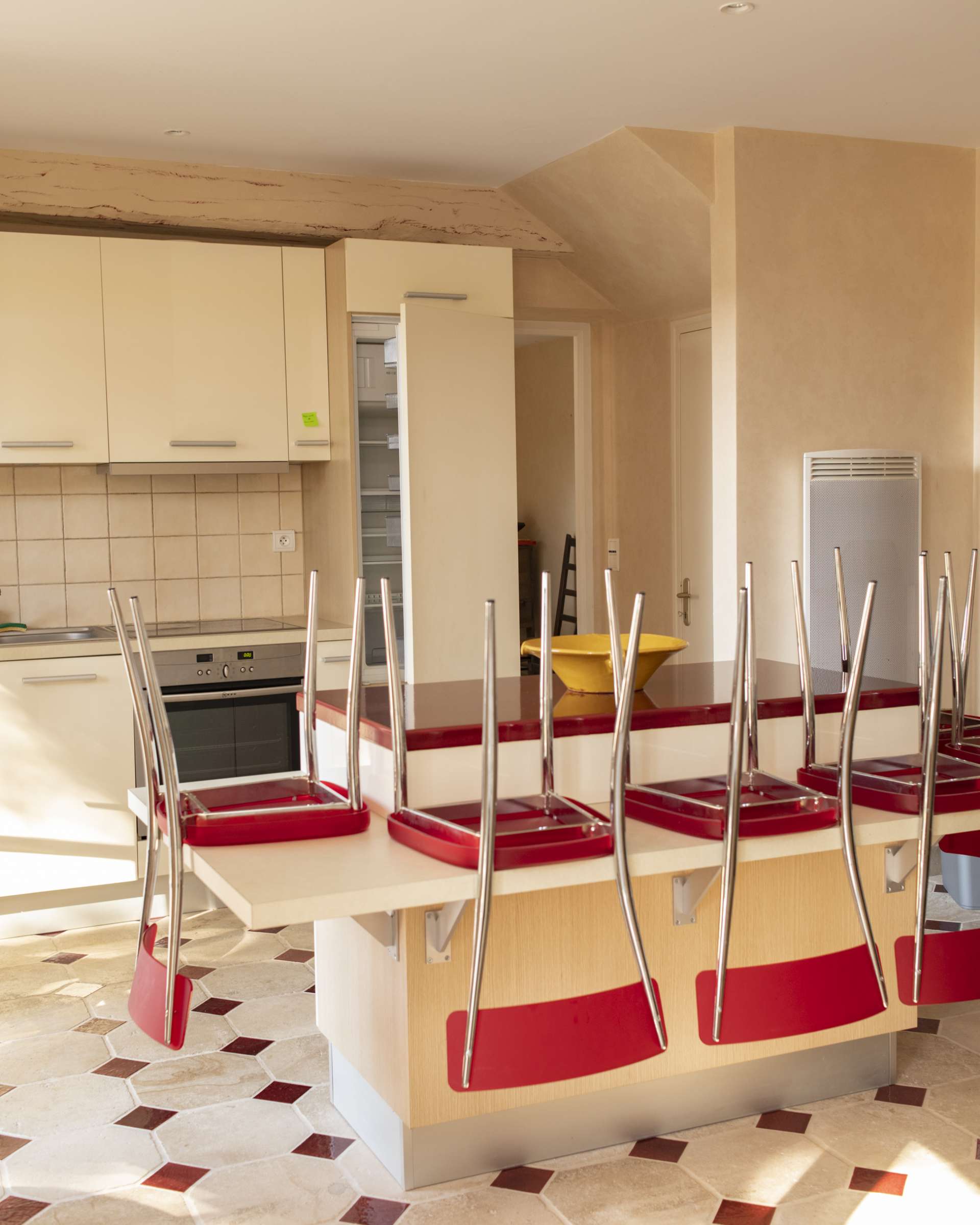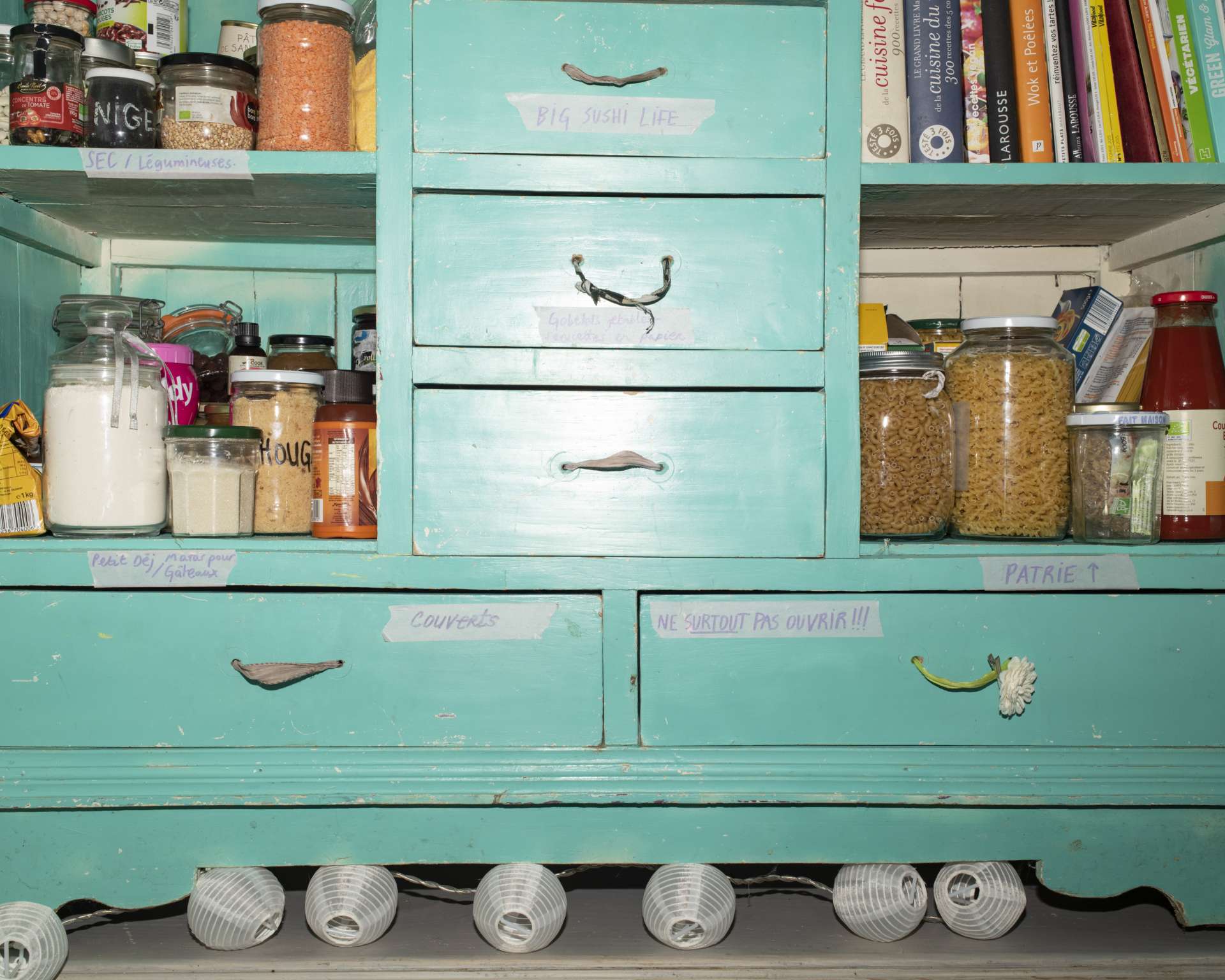Preamble
Our home-types were built from the common features that appear in the way inhabitants speak of and represent their homes in relation to their absences. In this construction, the idea of not being at home is at the center of the analysis as signifying a way of dwelling. Not being at home, being able to leave, being absent, is here a relationship that gives meaning to the house; it takes us away from the common idea of presence as the only way of dwelling.
If these ideal houses are the result of a cross-section of several viewpoints, deliberately simplified, behind each one of them is an inhabitant who was interviewed, whose relationship to home and to absence forms an archetype: this provides an example. Readers can also recognize themselves, to varying degrees, in the different ideal-types of homes presented.
THE “HOME ELSEWHERE”
THAT HINTS AT A POSSIBLE ABSENCE
The “home elsewhere” is filled with objects that evoke distant places. They are positioned and exhibited in specific places, visible, and sometimes staged to refer to distant places, to the outdoors, to reconstructed other-spaces : large photos of landscapes, a small museum cabinet, exotic plants, a wall hosting masks from various countries, a library of travel guides, etc. The world that is represented in these indoor spaces is often distant, exotic, but it is above all different, regardless of how far it is from home
"Yesterday I put my travel pants back on and found a nut, an almond shell, from very specific almonds that come from islands near Papua New Guinea, the Banda Islands where we went during the trip. I found this nut in one pocket, and an empty limpet in the other.
I thought to myself: ‘This is real life.’“
The “house elsewhere” reminds us that being away from home is always possible - and always desirable, even - as it glorifies, exposes and showcases past absences. To leave and travel far away, is to enrich oneself, to discover and above all to disconnect from the mundane, the routine, the ordinary, to recharge, to rest. The “house elsewhere” teases people with a constant temptation to leave by placing before their eyes images, messages, stimuli of past or dreamed journeys. The “house elsewhere” is designed to recall the presence lived there, the experience made outside of home, the exoticism of other places.
THE “MOBILE HOME”
WHICH MOVES AND CONTINUOUSLY RECREATES ITSELF
The “mobile home” is, in addition to the main residence, to the fixed postal address, to the stable domus from which daily life is organized, the one that moves with the dwellers. It follows them in their multiple presences, allows them to live everywhere a bit as you would at home and facilitates their absences from their fixed home.
"There are two opposite conceptions of the motorhome. Either the motorhome is a car in which you can sleep and live, or it’s a house that can move. For us, it’s clearly a house that moves. We like to park it in the countryside and not move any more. We leave because we have to go back to work, but not for long... My dream is to live all the time in this house that I move according to my desires, without constraints."
The “mobile home” is that which is taken away, compacted, duplicated, selected, stored, in luggage, suitcases and bags. It relates to home and allows you to feel a bit at home wherever you are, moving with the dweller and materializing his essence elsewhere. Its archetype is the RV, the house on wheels, that moves but remains connected to the fixed home through the transfers it requires (food, water, clothes, books, CDs, games, etc.) before leaving and the dwelling habits that get replicated there.
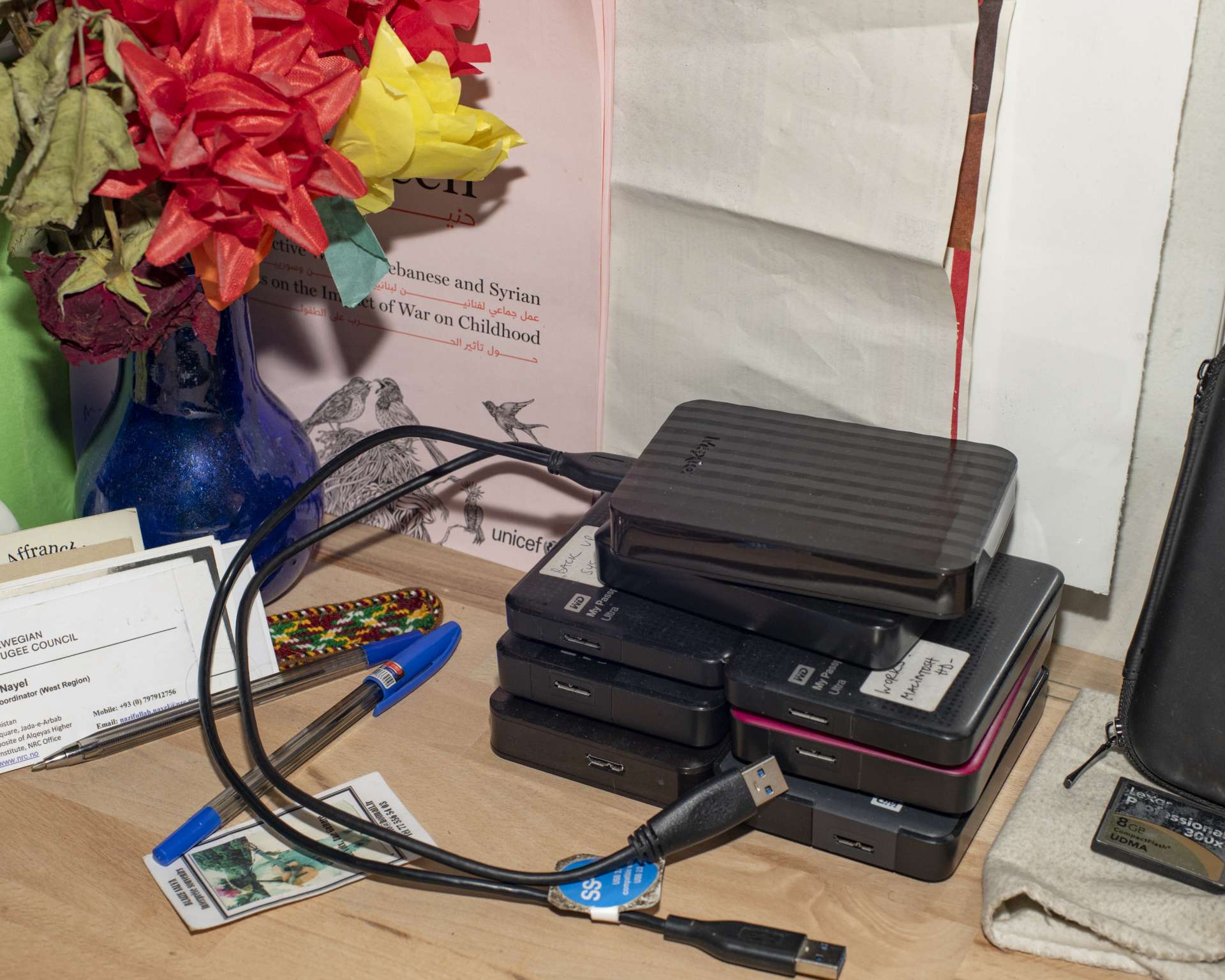



THE “AUTONOMOUS HOME,”
PROGRAMMED TO OPERATE ON ITS OWN
The “autonomous home” can operate on its own. It is autonomous because it was designed to be so through the technical possibilities of programming and remote control. It receives even instructions remotely. If they don’t produce the expected effects, the programmed operation deviates from expectations, and the house escapes its master and can surprise him. It is autonomous because it is partly automated via technical objects and devices that can produce actions planned and organized by the inhabitants for when they are absent. It is autonomous because it is connected and reacts on its own, via its sensors picking up on intrusions, sunlight, smoke, etc.
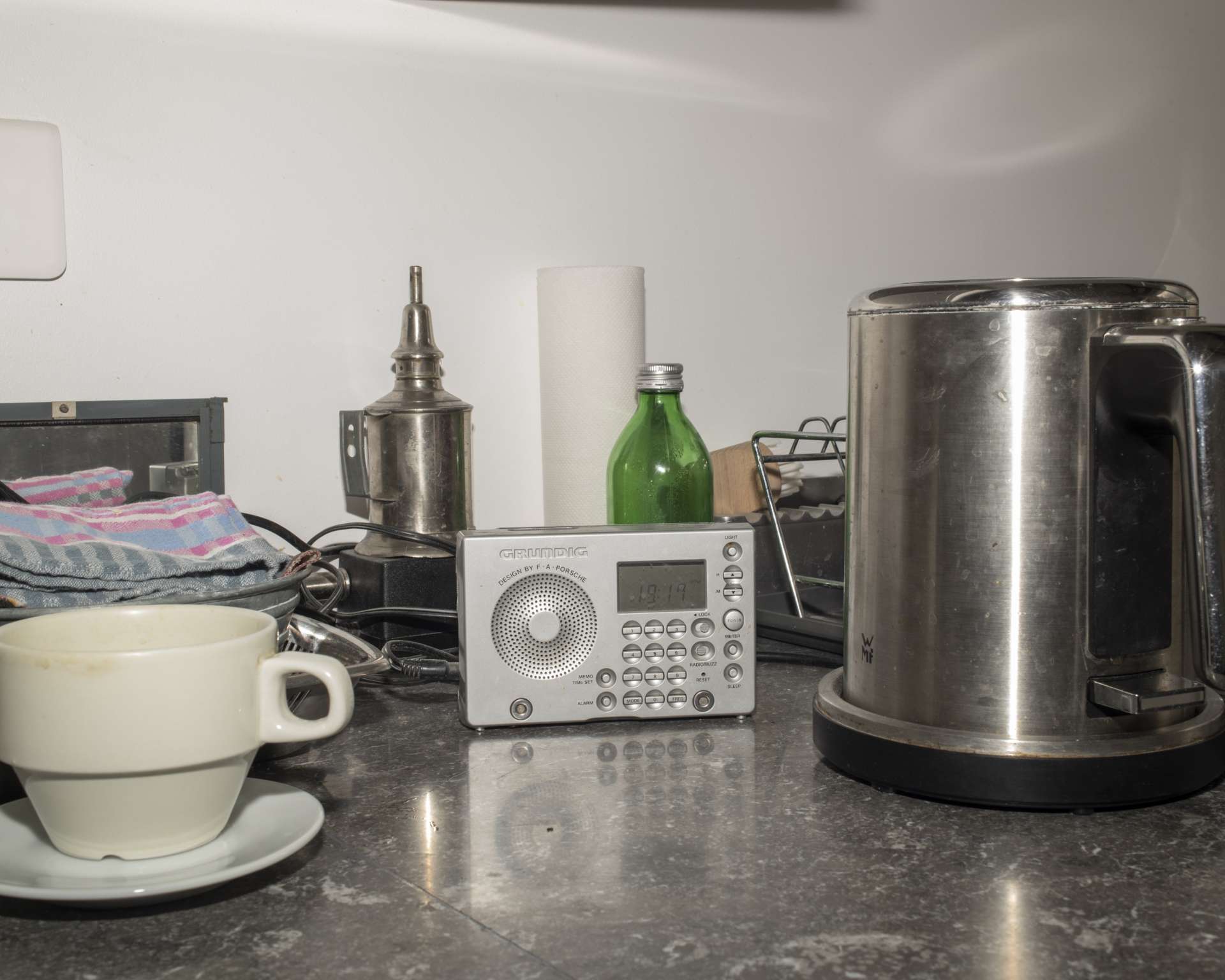


"When I get to the end of the street in my car, I'll say: Ok Google. Then I get home. It’ll open the shutters for me, turn off the alarm, put a music playlist on the TV. That way, when you get home, you have a little musical background. If it’s nighttime, it'll turn on the lights and in the winter it’ll turn the heating on at 20 degrees so when I get home, it's nice and warm."
But the “autonomous home” is also a home that remains present in the imagination of its absent inhabitants, a home that doesn’t change and must be found as it was left upon return. It is autonomous because it must protect itself from dirt, dust and intrusions, because it is equipped for it. It has to take care of plants and animals, thanks to all the technical, material and human devices put in place before each departure.

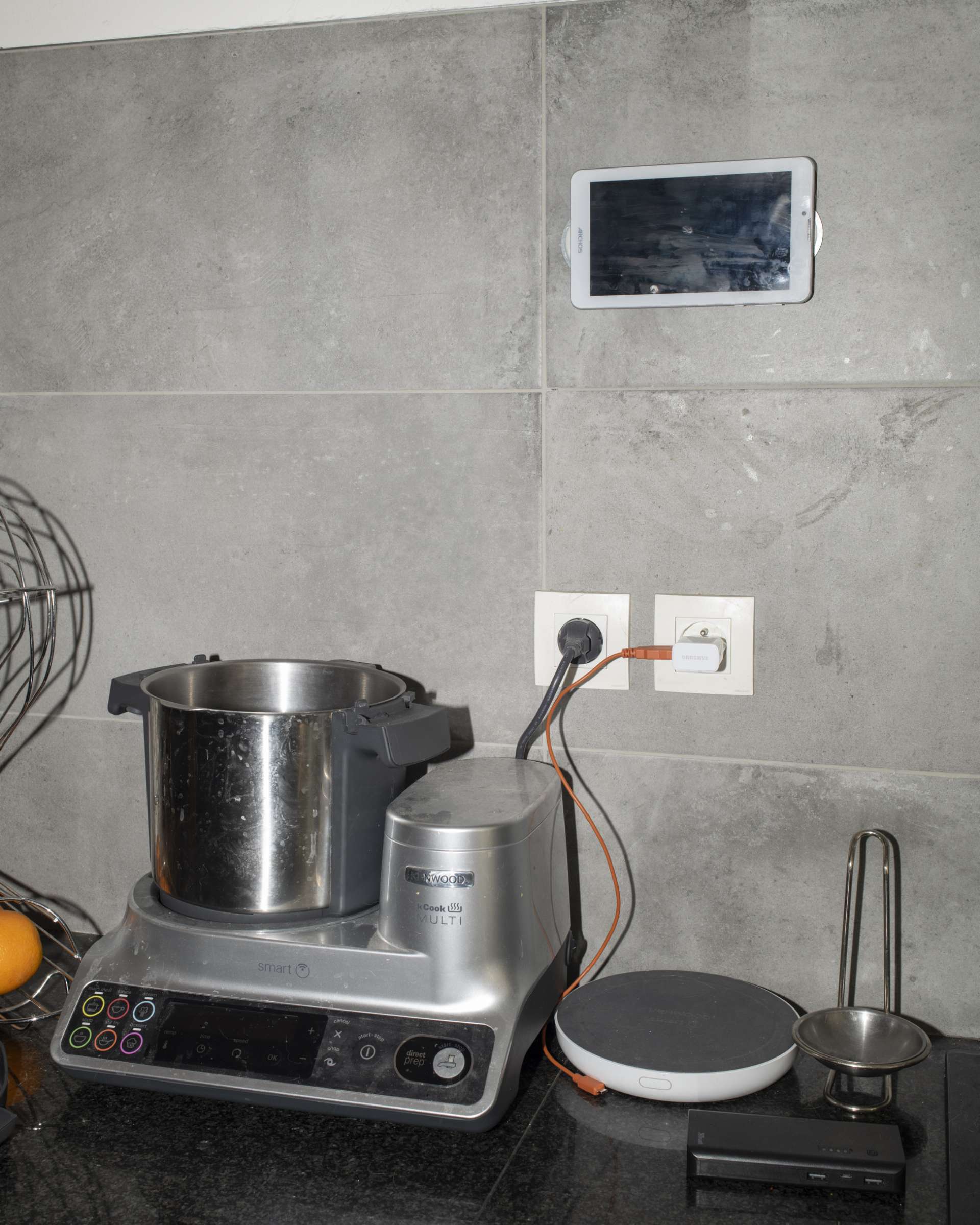



THE “SHELTER HOME”
FOR INCESSANT ABSENCES
The “shelter home” is, in the movement of daily life and the intensive rhythm of work-related absences, the stable, familiar place of rest and disconnect from professional life. A cocoon, a den, a cube, a refuge, it allows dwellers to rest and reenergize in a life of frequent trips and absences which are often irregular and unplanned. The “shelter home” is organized, equipped, furnished, to keep the stress of work and the fatigue of travel at bay. Always neat, tidy, clean, accessible, comfortable, it is ready to welcome its inhabitants at any time and save them from any unnecessary actions (shopping, tidying, etc.).



It’s a home that allows people to feel fully present in it, that also protects from the outside, where you can turn off your smartphone, close the computer, relax on the couch, do nothing, once duties and necessary activities are completed. The “shelter home” is the horizon of professional mobility. When leaving it, there is rarely any regret, there may even be some excitement, but it’s always returned to with pleasure and seen as a place of respite when travelling by train, car, subway or plane. The “shelter home” is the place where you manage your own time and a place to take some time for yourself.
"When I'm abroad, the time to leave is always very painful because it’s fulfilling being there. So I rarely have trouble leaving here and I'm not particularly happy to return. But I like reopening the door to my apartment, finding my home again, but I also like closing it.”
THE “PIVOTAL HOME”
IN A MULTI-LOCATED UNIVERSE
The “pivotal home” is part of a multi-located domestic system. It’s the place of stabilized presence, of constant return, the center of a multisite, polytopic habitat organization, a space from which are organized the absences and presences in other places. It is the main home, the one where ordinary daily life unfolds and from which less ordinary absences are projected. It’s a point of reference for all other homes or places of life where the inhabitants travel more or less regularly and more or less freely, where they have other professional or personal obligations.

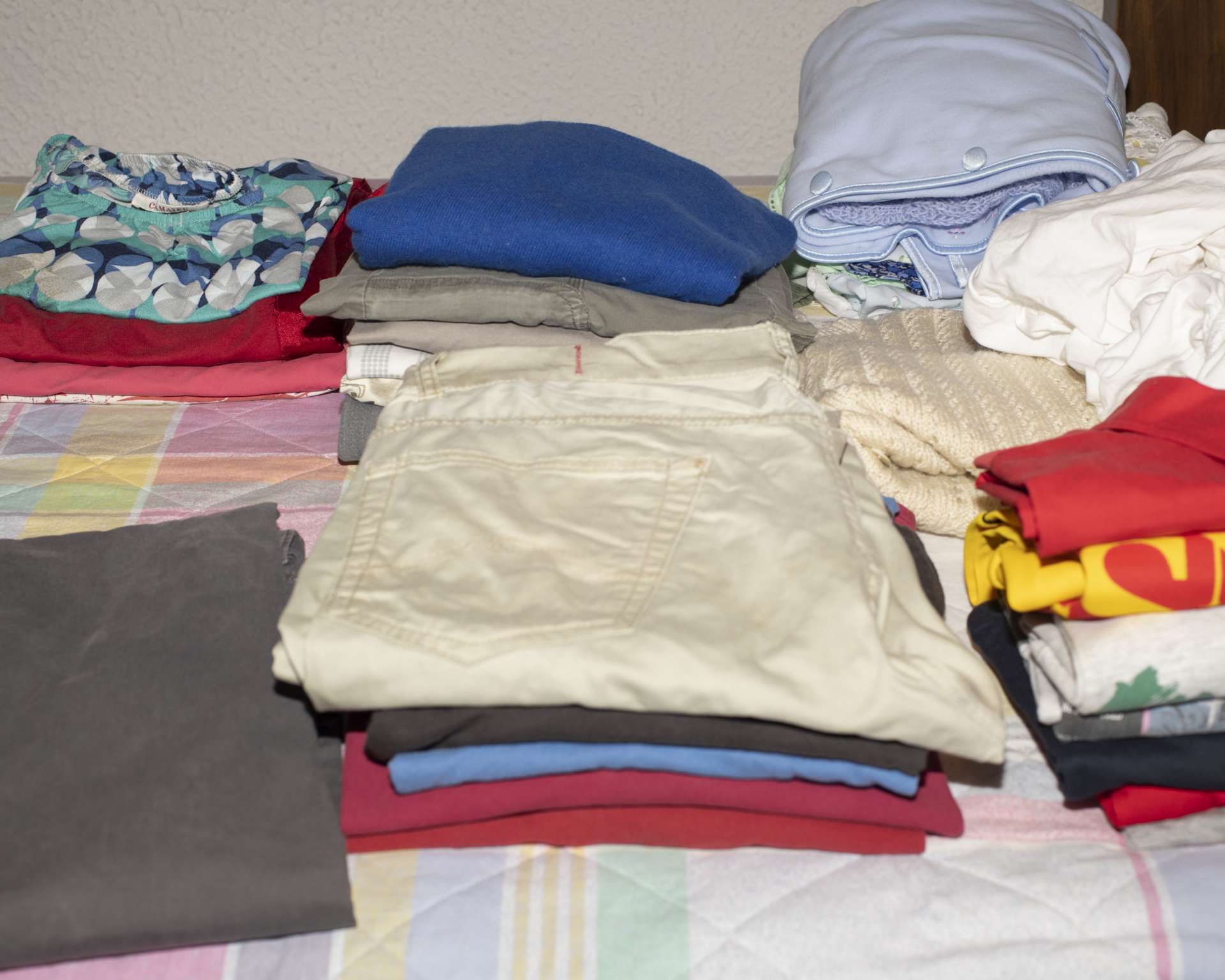




"I lend this apartment super easily to friends, and also to people I know less well. I like to know that there are people here, that there’s life, and that people can enjoy it. It's also to help out because it's a shame for it to be empty, in Paris where real estate is so expensive. We did Airbnb two or three times, but it's a hassle, too much organization. We didn't like it so much.”
The “pivotal home” is the one that has been inhabited for a long time and is the first choice compared to the various secondary homes inherited or purchased later; it’s the static home in relation to the home on wheels that is the motorhome; it’s the home of reference in relation to the holiday homes or those shared with others; it’s the private home, intimate, personal, for family activities, leisure, social bonding, as opposed to the company accommodation, hotels, or temporary rentals of mobile professionals. The archetype of the “pivotal home” is the main residence in relation to the secondary home.


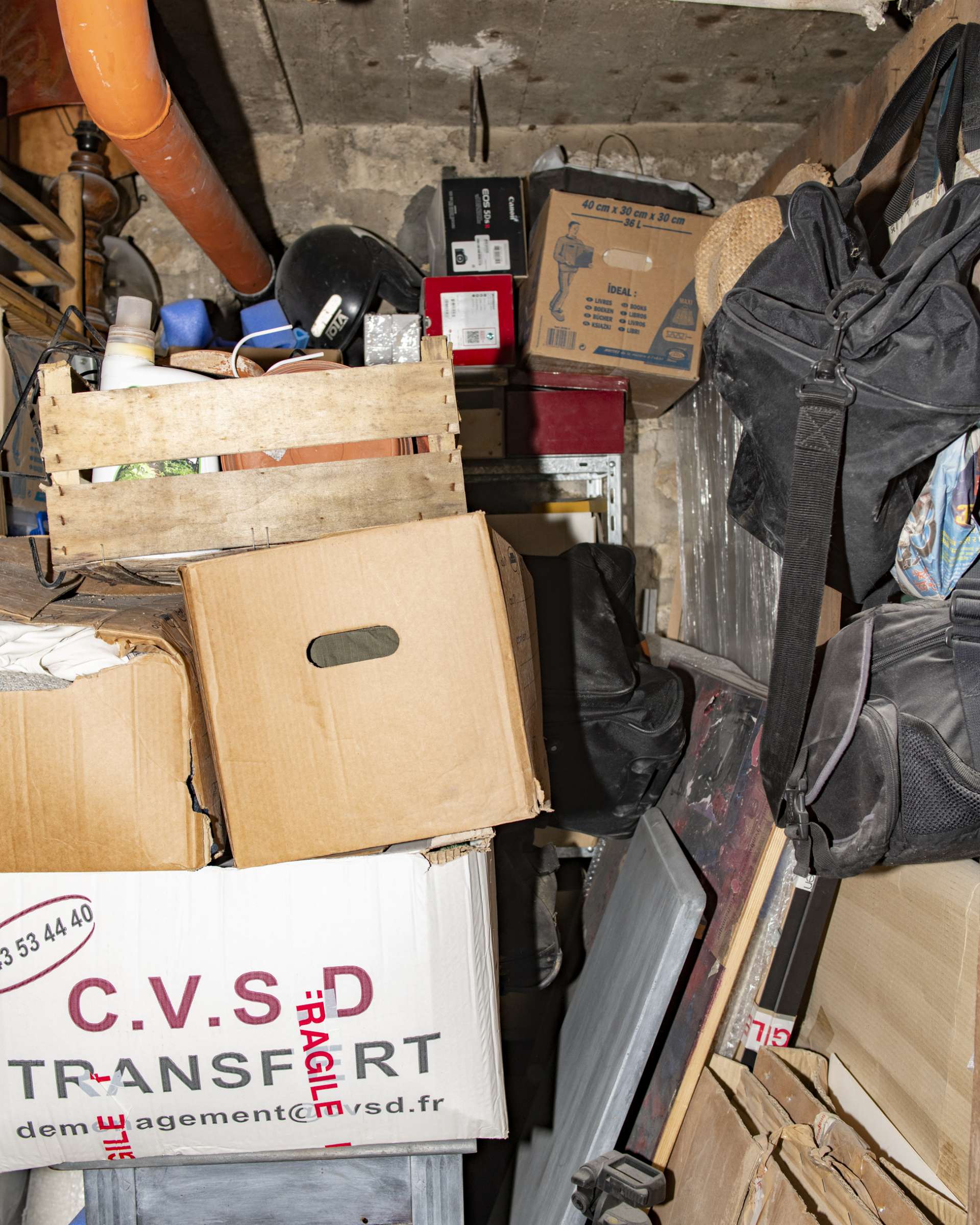

THE “MANIFEST HOME,”
AN ENGAGING PRESENCE
The “manifest home” encourages its inhabitants to be present. It is more than a place of residence, it is a statement, a model of dwelling to be defended and, as such, it requires some amount of commitment. The inhabitants devote time and energy to it, serving the experience that is offered by the house and performed by those who share it. The “manifest home” relies on devices that must be maintained, accompanied, updated on a day-to-day basis, even monitored and defended, in order to preserve its functioning and inner life.



My “manifest home” presents itself as an adventure that is designed and unfolds with inhabitants who test and experience shared alternative lifestyles and consumer practices, sustainable work-life balance, landscaping or gardening techniques, etc. It reflects its inhabitants who carry a message. It’s the formal and ideal entanglement of a way of life and a way of dwelling that equates being present at home with continuously producing the sense of feeling at home.


"In a way, house-sharing is a choice, but afterwards we plan to live together in the same place. It could be in the form of a hamlet, a mini-village. Basically, everyone would have their own private residence, while sharing a plot of land, for instance, with structures that we would also share. The idea would be to settle down somewhere, living near friends and functioning a bit as an open community with different activities. This idea of community would allow us to have a big vegetable garden, animals, other things to be self-sustaining to a certain extent and at the same time everyone would have their own activity or business on the side.”


THE “WORKING HOME,”
A QUASI-OMNIPRESENCE
The “working home” mixes professional and domestic activities. It mixes them spatially by hosting a desk in the living room, a computer next to the bed, an office in an annex to the house or a workshop in the garage. It blurs the temporal boundaries between work and parallel activities: shopping is done between two appointments, emails are sent before dinner, telework creeps in at nightfall. It accommodates rhythms of life that are organized through communication tools that also mix genres.
"Louis works here. He takes the kids to school and picks them up every day. But he sometimes makes trips, too. In that case, I ask for teleworking days that I couldn’t request before, because it’s always complicated. I say: ok, this day and that day, I didn’t use my teleworking days. But here, on the other hand, I need them.”
The inhabitant oscillates between regimes of presence, attention and availability to these two worlds, seeking to maintain borders without always succeeding. For some, the two worlds merge, mix, intersect constantly, sometimes complementing each other, often in tension, merging states of “being active” and “being at rest.” The “working home“ is demanding in terms of mental and physical presence.
Guided tours.
Researchers in social sciences and artists select part of artwork and comment under the prism of their knowledge, sensibility and discipline.
Guided tour
Benjamin Pradel and Hortense Soichet
Sociologist
Photographer
Durée : 12:02
Start visit
